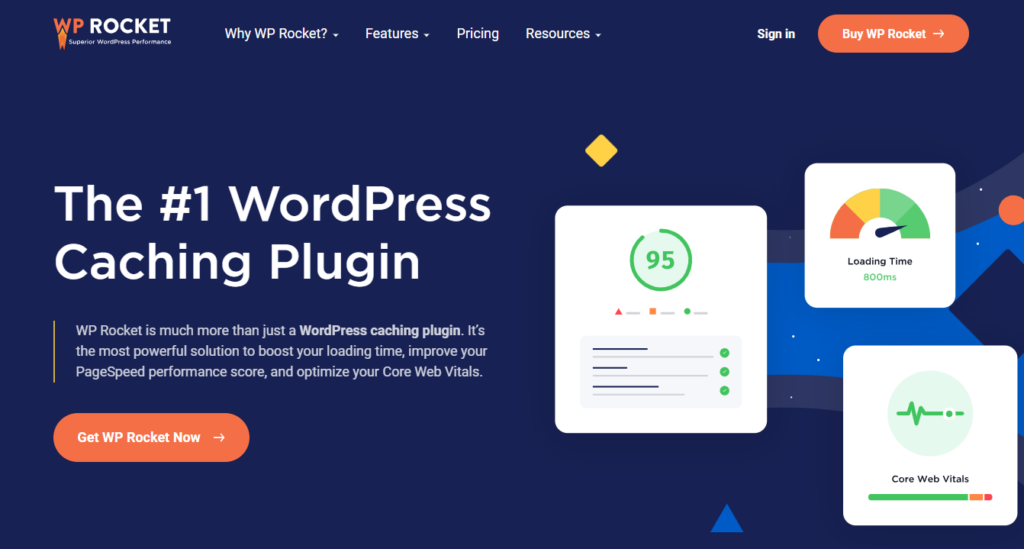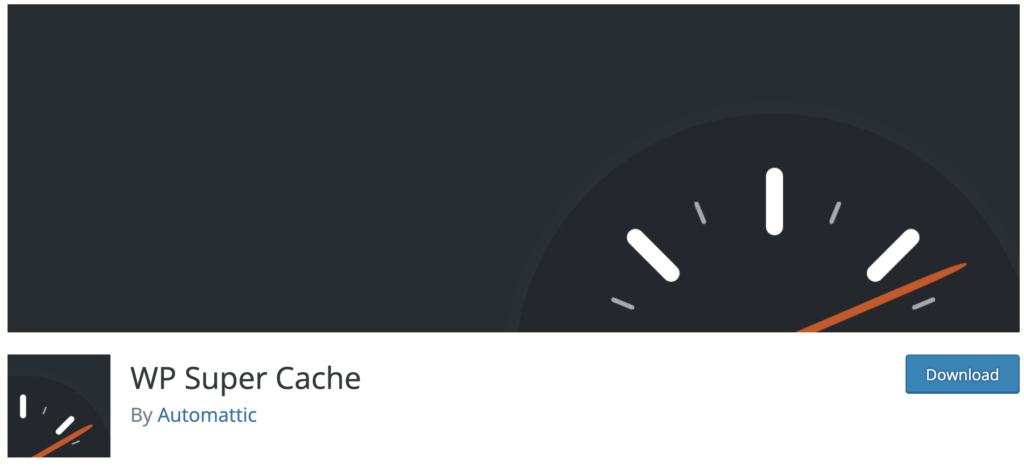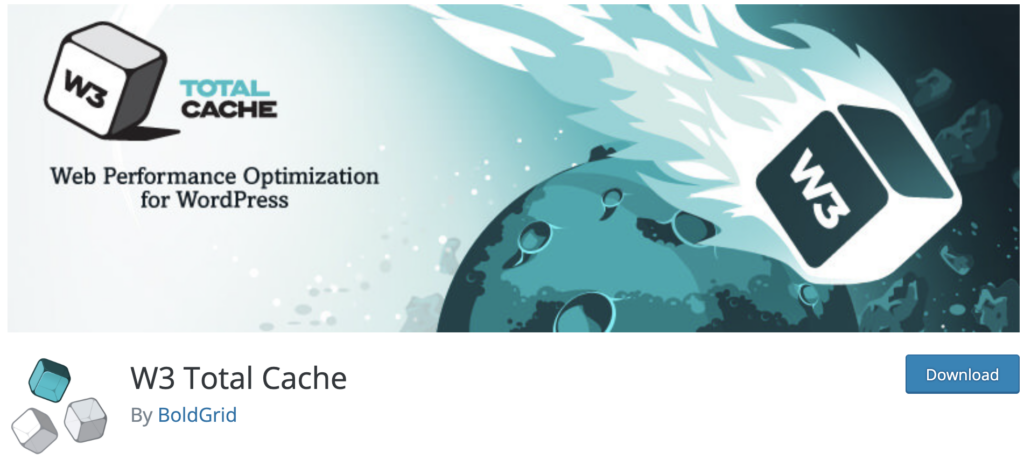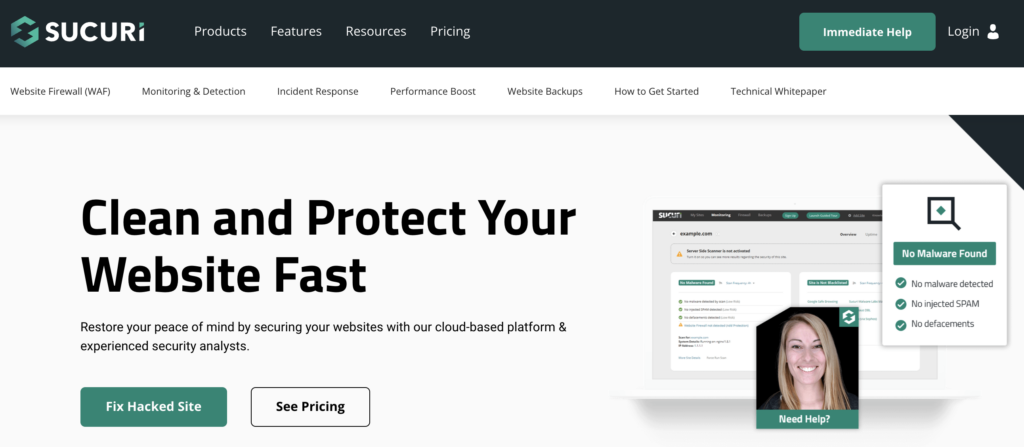6 Best caching plugins to Speed Up Your WordPress
Improving the loading time and performance of your WordPress Website must be a priority. There are already plenty of tutorials about how to optimize and speed up WordPress. But sometimes, performance optimization quickly becomes technical, especially when it comes to caching.
That is why I’ll focus on caching plugins and how to use them to speed up your website.
Before going to the list, let’s have a small recap about the importance of caching in WordPress.
Understanding WordPress Caching
What is WordPress caching?
Caching is the best way to speed up WordPress websites. Caching creates static copies of your pages and posts and display it to visitors. Static content is loaded more quickly because it limits the amount of requests generated between WordPress and your database.
That’s mainly why caching a website leads to faster performance. The easiest way to enable caching in WordPress is by means of plugins.
Why is it important to speed up your WordPress website with a caching plugin?
” We encourage you to start looking at your site’s speed (the tools above provide a great starting point) — not only to improve your ranking in search engines, but also to improve everyone’s experience on the Internet. “
Amit Singhal and Matt Cutts (Source: Using site speed in web search ranking)
Using a caching plugin has so many benefits. It’s excellent for user experience, search engine optimization and can help your serveur to deal with traffic spikes.
User experience: cached websites load faster than dynamic database queries. This is important because 40% of visitors leave a website that takes more than 3s to load (Source: How Loading Time Affects Your Bottom Line).
SEO: Google’s algorithm significantly takes site speed into account to define search rankings.
Traffic spikes: Caching also helps reduce the load on your serveur to preserve server memory and prevent downtimes from happening. If you don’t have a good WordPress Managed hosting, cash plugins can save your website life.
How do WordPress caching plugins work?
The process of loading a site can be summarized in 5 steps:
- Step 1: the visitor clicks on a link to access your website;
- Step 2: the visitor’s browser sends a request to your serveur;
- Step 3: Your serveur agrees to process the request;
- Step 4: Your serveur starts processing files and database requests to display your website;
- Step 5: Once it’s done, the website is actually sent to the visitor;
- Step 6: Your website is displayed in the visitor’s browser.
It is therefore a complex round trip between the browser and your hosting provider involving many exchanges with your database.
The loading time is therefor determined by two criteria: the size of the files to be processed and the number of requests to your database.
We can explain, in a very simplified way, why a WordPress site load slowly with this formula: (total file size) x (number of requests) x (the performance of your web host) = loading time
If you have time and want to understand everything about performance optimization for WordPress, take a look at this article: How to Speed up Your WordPress Site (Ultimate 2020 Guide).
It’s the most comprehensive guide on performance optimization for WordPress available on the internet, but it’s (too) long.
Best WordPress Caching Plugin Comparison
1. WP Rocket: The Fastest Caching Plugin for WordPress

When it comes to caching plugins, WP Rocket is our go-to option. It’s user-friendly and doesn’t require you to be a tech genius to get started. With just a single click, your website gets cached, making it super speedy.
WP Rocket takes care of everything, like enabling gzip compression, optimizing your page cache, and pre-loading cache automatically. But that’s not all! You can also boost your site’s performance with optional features like lazy loading, CDN integration, DNS pre-fetching, and code minification.
Why do we love it? Well, WP Rocket powers WP Umbrella, and it’s been amazing for our site’s speed!
2. WP Super Cache: Free and Highly-Recommended

WP Super Cache is a free WordPress caching plugin that comes highly recommended by some of the top WordPress hosting providers out there.
It offers everything you need for a fast website. You get gzip compression, page cache, pre-loaded cache, CDN support, and advanced cache preloading—all for free!
For a simple setup process, check out the organized settings section or take a look at our how-to article on setting up WP Super Cache.
3. W3 Total Cache: The All-In-One Caching Plugin

W3 Total Cache has a multitude of features that make it a comprehensive solution for WordPress caching. However, the abundance of features might make it a tad overwhelming for newbies.
This plugin includes all essential features like page and object caching, gzip compression, limited minification, and CDN support. For step-by-step guidance, check out our setup tutorial for W3 Total Cache.
4. Sucuri: More Than Just a Security Plugin

Not just a firewall, Sucuri also doubles up as a caching plugin. It’s unique because it operates at the DNS level, meaning it can deliver cached content before a user’s request even hits your website. This significantly enhances your website’s speed.
With just a click, you can enable content caching and gzip compression, making it a top pick for any website owner.
5. NitroPack: The All-in-One Speed Optimization Solution

If you’re looking for a one-stop-shop for all things speed optimization, NitroPack is the answer. This powerful tool not only offers caching but also incorporates various other speed optimizations like image optimization, CSS and JavaScript minification, and even CDN services. The platform is designed with a focus on ease-of-use, making it accessible even for those who aren’t tech-savvy. Its automated performance improvements mean you won’t have to spend hours tweaking settings; NitroPack handles all the heavy lifting for you. One unique feature is its “Smart Invalidation,” which only clears the cache for updated content rather than purging the whole cache, making your site even faster.
5. Built-in Caching Solutions from Hosting Providers
More and more WordPress hosting companies are offering in-house caching solutions to reduce server load and improve site performance.
Kinsta’s One-Click Caching Solution
If your site is hosted with Kinsta, you’re already in luck—no need to worry about third-party caching plugins. Kinsta provides a built-in caching solution that’s as easy as clicking a button. With four types of cache at your fingertips, including page, object, CDN, and opcode, Kinsta’s optimized WordPress hosting environment ensures your site loads at lightning speed. You can manage and clear your cache easily via the Kinsta dashboard, giving you full control without the hassle.
SG SuperCacher by SiteGround
Available in all their hosting plans, SiteGround’s dynamic WordPress caching improves your website speed by up to 500%! They also offer Memcache and Brotli compression, adding an extra 15-20% speed boost.
WP Engine’s Built-in Cache
WP Engine isn’t just a top-tier managed WordPress host; they also offer built-in caching. You can easily manage and clear cache via your WordPress admin dashboard.
Bluehost’s In-built Caching
As one of the largest hosting companies and an officially recommended WordPress hosting provider, Bluehost offers built-in caching that can be managed directly from your hosting dashboard.
In Conclusion: Speed is King, and Caching is the Crown
Whether you’re a WordPress beginner or a seasoned pro, one thing is certain: website speed matters. From WP Rocket’s beginner-friendly approach to Sucuri’s dual role as a security and caching plugin, there’s an option out there for every need. Let’s not forget the hosting providers like SiteGround, WP Engine, Bluehost, and Kinsta that make life easier with their built-in caching solutions. And if you’re looking for an all-encompassing speed optimization package, NitroPack has got you covered.
